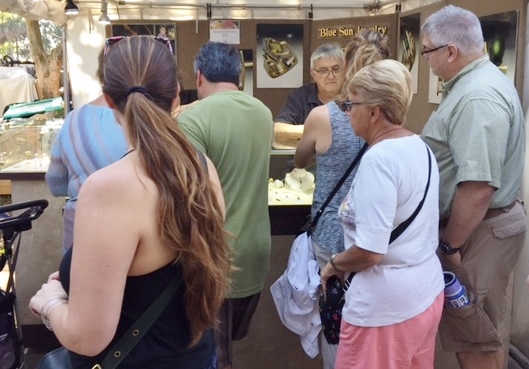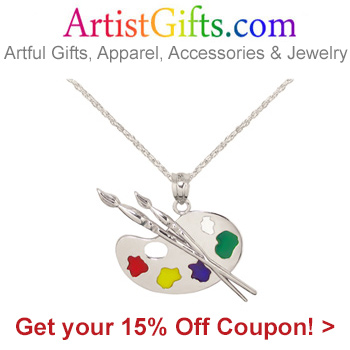The more you learn about your target customer, the better you are able to reach them, speak their language, engage them and make sales of your art.

As you gain experience meeting customers and gaining traction in the marketplace of your choice, you’ll begin to have some idea of who your ideal customer is. There are distinct benefits to knowing your target customer. Here’s why:
- You can hone your marketing to reach the right people. Build a list of customers and prospects that fit your customer profile, and then create a message that resonates with them. Knowing your customer allows you to tailor your marketing efforts and become more effective.
- When you are a good fit for your prospects’ specific interests, you will more easily be seen as an expert and a specialist in that niche.
- It’s easier to avoid art festivals and other events that do not cater to your ideal customers, which saves you time, energy and money.
- Your ideal customer is your best opportunity for repeat sales.
- They can be a good source of referral sales to others they know who are like them, share their interests or hobbies, and their values.
Create a Customer Profile
First, paint an imaginary picture of your customer. The more information you gather about them, the easier it is to distinguish why they buy from you. And, it’s easier to see opportunities to design new work that will appeal to them.
As you speak with people interested in your work, ask questions and listen carefully to their answers. What brings them to the fair or festival? Are they traveling? Are they shopping for a gift? What intrigues them about your work? Which pieces are their favorites, and why? It’s not difficult to engage in this way; most people love to talk about themselves.
Are you just starting out? If you don’t already have customers for your art or handmade work, do a mental exercise to start your profile. Most artists actually have an idea of their target customer even if they are new at the game. This is especially true if they had someone in mind when designing their line. This is a good place to start. Who is the person you plan to sell to? Imagine:
- Are they male or female?
- What is their age?
- Do they have children?
- Their educational level?
- Their occupation?
- What type of car do you think they might drive?
- Where do they live?
- Are they a member of any clubs or groups? Which ones?
- Are they a homeowner? What style of home do they have?
The above information above relates to Demographics – statistical data that gives you certain information about your customers. But there is another dynamic that you should understand to create an accurate profile.
Psychographics
Psychographics give you clues about the customer’s personality, their desires, and what motivates them to buy. Remember, making a purchase is an emotional decision. This is where you immerse yourself in the buyer’s psychology to gain a familiarity with their thinking and behavior. Some segments of a Psychographic profile are: personality, attitudes, values, interests and hobbies, spending habits and lifestyle choices.
To create a psychographic profile of that target customer, note the following information that you are able to gain through conversation:
- Are they concerned with their personal appearance?
- Do they enjoy travel and/or culture?
- Do they entertain frequently?
- Are they eco-conscious?
- Would they refer to themselves as religious?
- Are they family-oriented?
- What are their interests in a particular hobby or pastime?
- Do they have expensive tastes?
- What do they do with their leisure time?
When doing that customer “research” through meeting people interested in your work, ask them questions that relate to your art. And ask about the niche you are in, or the theme of your collection in order to gain an even deeper understanding.
Over the course of conversations, you will gather more and more information about your customers and interested prospects. Determine what they have in common, and make notes. You can often learn a lot about your customers by observing their behavior as well as speaking with them.
Over time, you will be able to develop a more detailed profile. Use that knowledge to develop marketing content that clearly addresses your ideal customer. Your branding, and even signage and booth displays can be designed to appeal more directly to the very people who are most likely to love what you make.


Great read. Although your post states the obvious we should all be thinking about, it’s very helpful. As artists, we get caught up in creating art and often forget to stop and think of these simple steps to identify our target customer. Pinning your post for future reference. Thank you for making it clear.
Thanks for the comment, Tina. I would agree that it seems pretty straightforward, but many times if asked, artists don’t have an idea of that target customer. Or, they may actually be mistaken about it. This interview with Carroll Swayze https://www.artsyshark.com/2015/04/30/carroll-swayze-interview/ tells the story of an artist who did the research on her target customer, and what she found transformed her business. It’s a fascinating read.